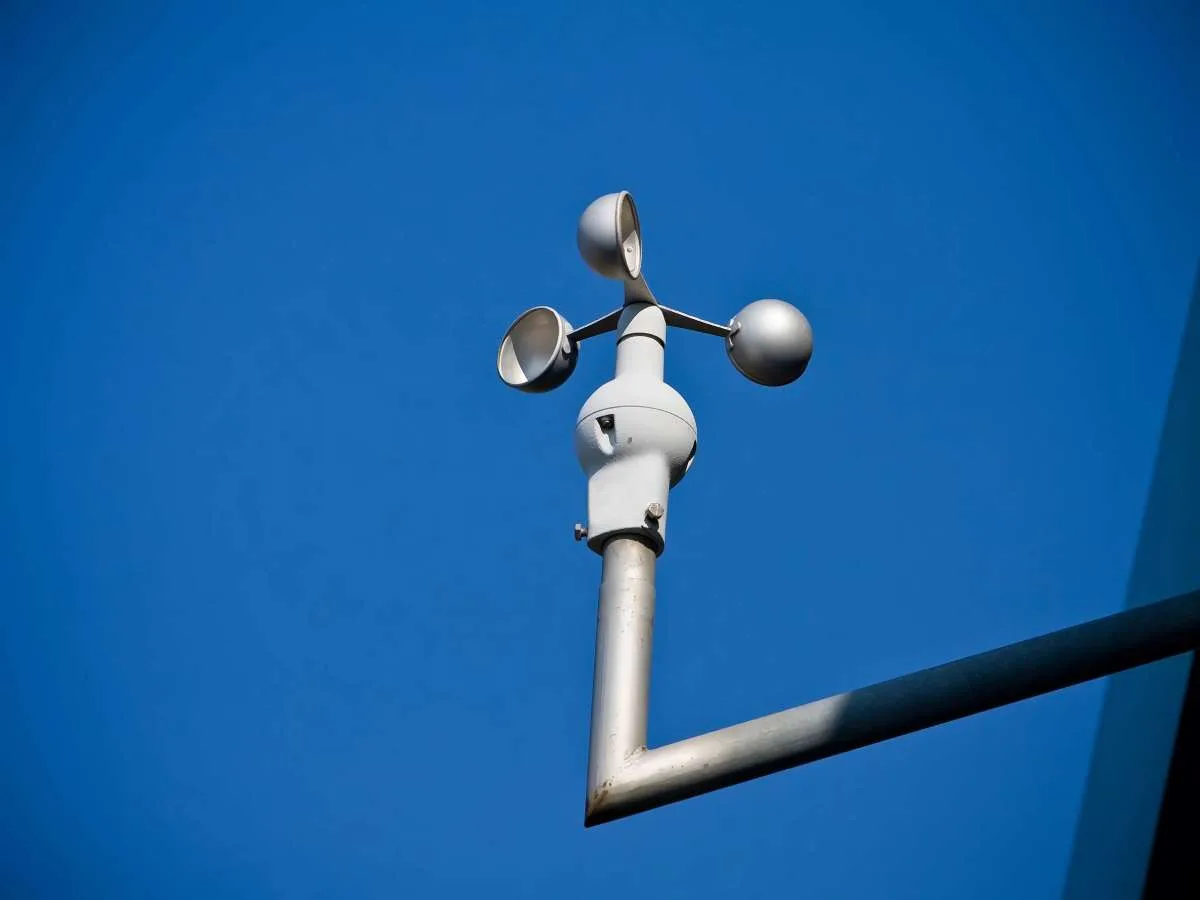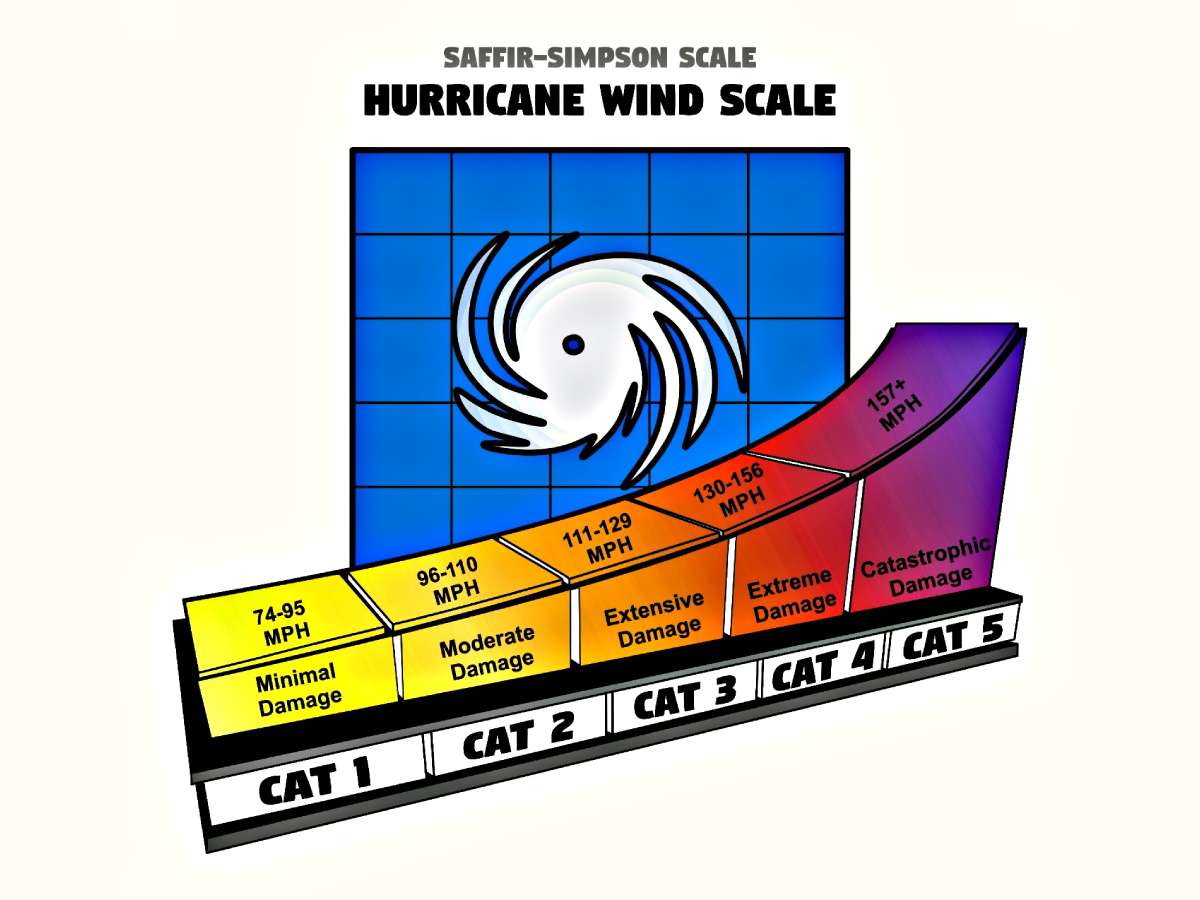When meteorologists and weather bugs measure the wind, they use an anemometer.
An anemometer is a device that can very accurately gauge how quickly the wind is moving.

Anemometers come in various shapes and sizes, but in most cases they are comprised of 3 or 4 small cups attached sideways to a carousel that spins with the wind.
The cups catch the wind as it passes by, and sensors in the anemometer detect the wind speed based on how many revolutions or how quickly the cups make. Some anemometers are observed for revolutions per minute, which can be used for determining wind speed.
Learn more about using anemometers and how you can even make your own!
Anemometer – A Big Word For A Simple Machine
While anemometer is the correct term, these wind devices are also commonly called wind gauges or wind sensors.
In each case, the task is basically the same — to measure the wind.
And, by the way, a wind vane or a weathervane is something entire different than an anemometer. Wind vanes and weathervanes measure the direction from which the wind is coming — not the speed of the wind.
How To Make Your Own Anemometer
Anemometers are pretty basic weather instruments. In fact, making an anemometer is a fun project you can do on your own!
It’s really very easy…
Before You Buy An Anemometer
If making an anemometer is not your cup of tea, then you’ll find plenty of anemometers you can buy pre-assembled and ready to go!
Several good anemometers exist. Most on the consumer market are included as part of a weather station (which also measures temperature, rainfall, and humidity).
Here are some good weather stations to consider:
- La Crosse Technology Advanced Weather Station
- Davis Instruments Vantage Vue Wireless Weather Station
- Oregon Scientific Professional Wireless Weather Station
The Beaufort Wind Scale
If you like measuring wind, then you’re probably also interested in knowing the different wind speed categories meteorologists use to articulate how severe (or mild) wind speeds are.
Check out the Beaufort Scale:
| Beaufort # | Wind Speed (MPH) | Description | Details |
|---|---|---|---|
| 0 | < 1 | Calm | Smoke rises vertically. No wind. |
| 1 | 1-3 | Light Air | Wind vanes may not move, but smoke will drift in the direction of the wind. |
| 2 | 4-7 | Light Breeze | Leaves rustle. Wind felt on the face. |
| 3 | 8-12 | Gentle Breeze | Leaves and small twigs move. Flags flutter. |
| 4 | 13-17 | Moderate Breeze | Small branches move. Umbrellas become difficult to hold. |
| 5 | 18-24 | Fresh Breeze | Small, leafy trees sway. Loose objects are blown around. |
| 6 | 25-30 | Strong Breeze | Large branches move and wind whistles around utility wires. Walking becomes difficult against the wind. |
| 7 | 31-38 | Moderate Gale | Whole trees move in the wind. Twigs break off trees. |
| 8 | 39-46 | Gale | Twigs break off trees. Walking against the wind is nearly impossible. |
| 9 | 47-54 | Strong Gale | Branches break off trees and small trees topple. Damage to buildings begins. |
| 10 | 55-63 | Whole Gale | Trees are uprooted and some shingles come off roofs. Significant damage to buildings. |
| 11 | 64-72 | Violent Storm | Trees and plants suffer destruction and roofs are damaged. Widespread power outages. |
| 12 | 73+ | Hurricane Force | Windows break and mobile homes and other small structures are damaged or destroyed. Catastrophic damage. |




